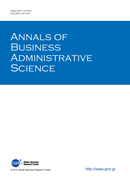
- 6 号 p. 251-
- 5 号 p. 199-
- 4 号 p. 163-
- 3 号 p. 119-
- 2 号 p. 59-
- 1 号 p. 1-
- |<
- <
- 1
- >
- >|
-
Comparative Study of International Knowledge TransferYoungkyo SUH2016 年 15 巻 6 号 p. 251-263
発行日: 2016/12/15
公開日: 2016/12/15
[早期公開] 公開日: 2016/12/09ジャーナル オープンアクセスThe production systems of Japanese companies are considered to be firm-specific advantages, which lead to superior productivity. The mother factory system, exemplified by Toyota Motor Corporation, has been used as a primary method for transferring Japanese production systems overseas. However in recent years, some companies, such as Hyundai Motor Company of Korea, have begun using a different way to transfer production methods overseas. This paper terms this method the “model factory system” and compares it with the mother factory system within the framework of knowledge transfer theory. In this framework, production systems are regarded as knowledge held by the home country. In this analytical framework, members, tools, and manuals represent knowledge that is directly moved; skills, organizations, and layouts represent knowledge that can be reproduced by the recipient. This framework was used to analyze cases of production system transfer overseas by Toyota Motor Corporation and Hyundai Motor Company. It was shown that the mother factory system primarily transfers knowledge from the home country’s factories, whereas the model factory system transfers knowledge from the corporate headquarters.
抄録全体を表示PDF形式でダウンロード (331K) -
The Case of a Semiconductor Equipment ManufacturerSeungkee MIN2016 年 15 巻 6 号 p. 265-272
発行日: 2016/12/15
公開日: 2016/12/15
[早期公開] 公開日: 2016/12/13ジャーナル オープンアクセスVon Hippel (1988) coined the term “user innovation” by arguing that semiconductor device makers (equipment users) played a critical role as innovators in the development of semiconductor process equipments. However, in the same period of this study, the Japanese semiconductor process equipment manufacturer, ULVAC, autonomously conducted fundamental research on the material composition of cobalt–nickel–chrome (CoNiCr), a study that is generally conducted by device makers. Based on the material research outcome, ULVAC developed new manufacturing equipment for HDD and supplied it to users (device makers). Here we define this phenomenon as “adverse user innovation,” which works in an opposite manner to the “user innovation” of von Hippel (1988). In fact, there are likely to be numerous other examples similar to this case.
抄録全体を表示PDF形式でダウンロード (243K) -
Ryusuke KOSUGE, Nobuo TAKAHASHI2016 年 15 巻 6 号 p. 273-284
発行日: 2016/12/15
公開日: 2016/12/15
[早期公開] 公開日: 2016/12/13ジャーナル オープンアクセスObservations of a Japanese automobile dealer company shifting from a selling orientation to a market orientation revealed the following: (1) A market-oriented program with a process and team orientation threatened the self-concept of the sales force and was rejected by most of them; (2) when three out of 54 shops, or only approximately 5%, appeared to be developing a form of market orientation, the top management selected managers of those three shops as well as changed the existing evaluation and reward system, which caused market orientation to take precedence in the organization. It should be noted that what happened at this company was contrary to natural selection or competitive isomorphism. At first, these three shops performed so poorly that they could well have been “selected out.” However, the top management allowed the three shops to survive and, when the time was ripe, deliberately made an effort to spread the form of market orientation within the organization. In essence, it is suggested that the key mechanism of developing a market orientation is institutional isomorphism through artificial selection.
抄録全体を表示PDF形式でダウンロード (232K)
- |<
- <
- 1
- >
- >|